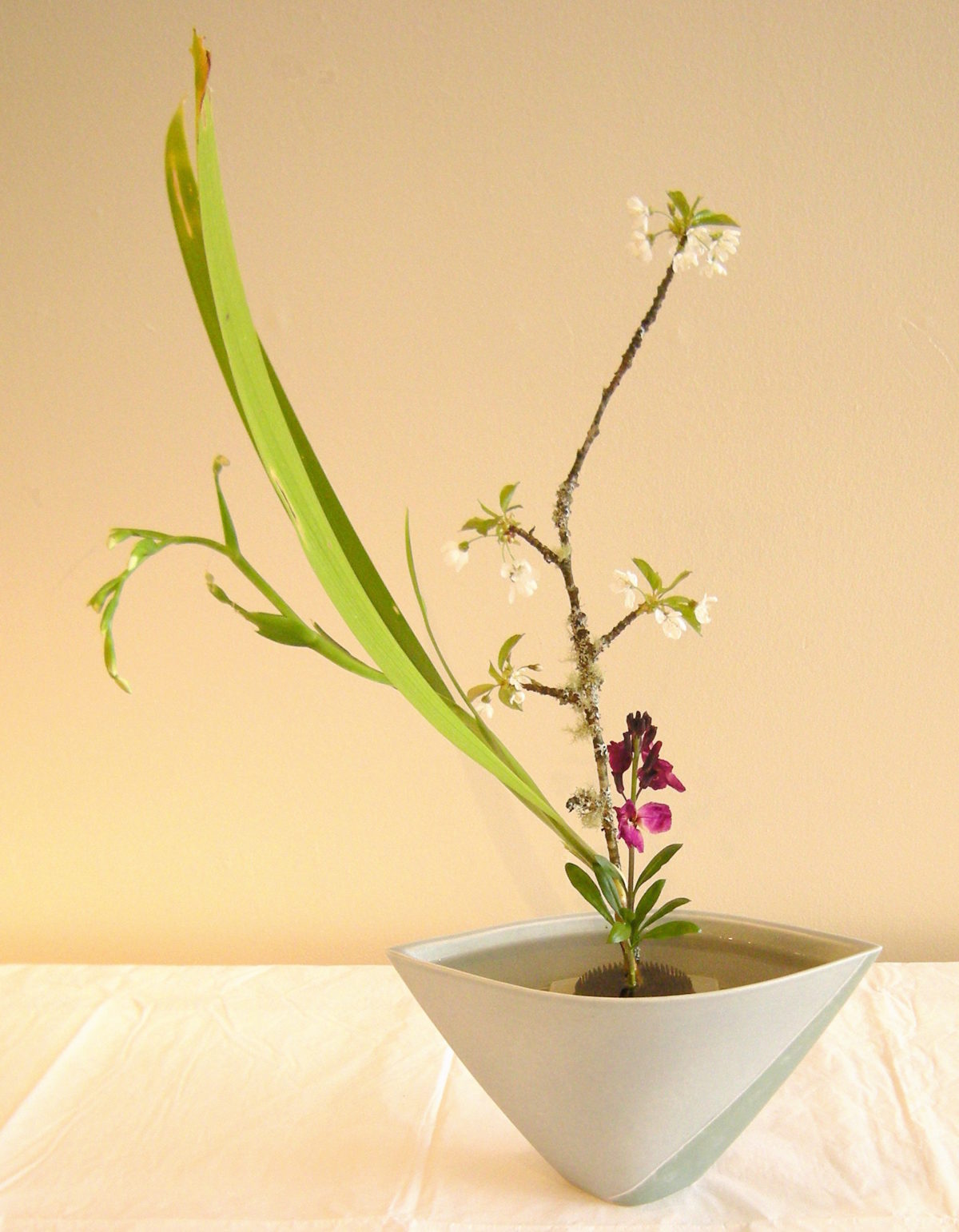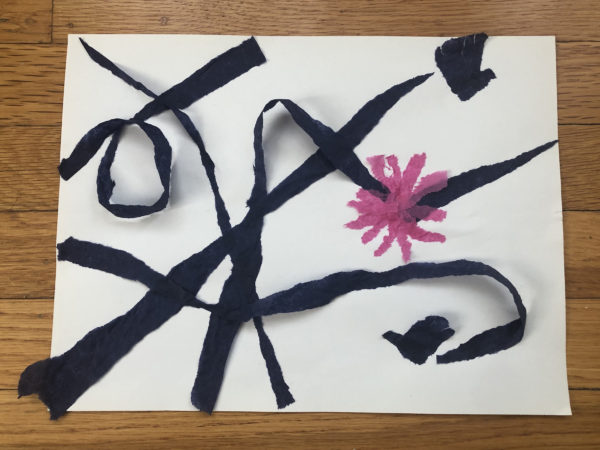Activity
Japanese Floral Arrangement (Ikebana)

Ikebana by Yoshiko Nakamura on display at Seattle Center
A highly developed appreciation of flowers is already evident in Japan’s early poetry anthologies, the Manyoshu (700s) and the Kokinshu (compiled around 905). Flowers are also a dominant subject of Japanese paintings, often intending to remind the educated viewer of a well-known verse, person, or place associated with the flower or its fragrance. It is no wonder then that Japan has a refined form of floral arrangement, known as ikebana (“to arrange and give life to flowers”). For some basket makers like Ikeda Hyoa, baskets and flowers are integral to each other: “If a basket is made in complete perfection it does not have a place for the beauty of flowers.”
Like the tea ceremony, ikebana traces its development to Buddhist ritual. As early as the sixth century, flowers would be placed in front of a Buddhist image along with incense and candles. During the 1500s and 1600s, a style of flower arranging called rikka (“standing flowers”) flourished among the aristocracy as a secular art. Baskets, along with ceramic and metal vases, were used as containers. In a traditional Japanese reception hall or tea room, flowers were placed or hung in the tokonoma—a platformed alcove that served as the focal point of the room. In the Edo period, flower arranging was practiced by women and men of the merchant classes, popularizing this previously exclusive art form. Today ikebana is the umbrella term for a stunning array of styles of flower arranging from the traditional to the avant-garde, involving nearly 3,000 schools in Japan and abroad.






